The week at a glance
- Norwegian-ringed Siberian Thrush resurfaces on Shetland
- Bridled Tern passes Pendeen
- Black Scoter in Angus
- Steppe Grey Shrike moves on from Norfolk
- At least three Isabelline Shrikes found
- Decent influx of Rough-legged Buzzards
After a particularly busy start to the week's bird news, things gradually quietened down as we entered the new working week, and with the arrival of ex-Hurricane Gonzalo on 21st we endured one of the quieter days of this October.
Still, every cloud has a silver lining, and the blustery conditions on Tuesday proved no exception, as Cornwall's second-ever Bridled Tern passed Pendeen mid-morning. In fact, it proved the highlight of a memorable day of seawatching with good variety and numbers passing; other counts included: 420 Balearic Shearwaters; 260 Great Skuas; and several Grey Phalaropes. Nearby St Ives also did well, with totals including 50 Pomarine Skuas, 305 Great Skuas, 400+ Balearic Shearwaters and several Leach's Storm-petrels. Numbers in Pembrokeshire were not quite as spectacular, though Strumble Head did notch 36 Poms, as well as a handful of Sabine's Gulls, Leach's Storm-petrels and Grey Phalaropes. As is so often the case, the most spectacular counts came from Ireland, where Kilcummin Head (Mayo) registered 62 Grey Phalaropes, 13 Leach's Storm-petrels, 92 Pomarine Skuas, 126 Sooty Shearwaters and a late Cory's Shearwater to boot.
The rarest bird of the week, though, was a first-year female Siberian Thrush trapped at Scousburgh (Shetland) on the evening of 15th. This represents only the ninth British record (though there are also two from Ireland) and the first since a young male on Fair Isle in 2008. While its appearance left a little to be desired (and one wonders how easily it might have been overlooked on poor views), it was no doubt a thrill to find in the nets — particularly given that it bore a Norwegian ring. As a result, it was easily identifiable as the bird trapped in the spectacular village of Husøy, Norway, on 24 September. Presumably it has been hiding out somewhere in Norway for the past few weeks before crossing with the large numbers of other thrushes (and migrants in general) and arriving in the British Isles last week. What a great ringing recovery!
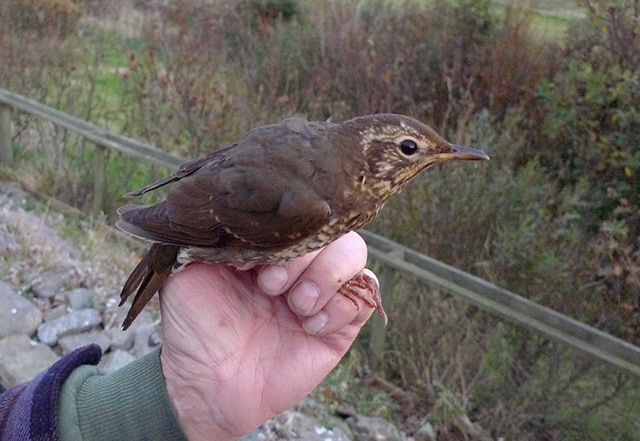
Siberian Thrush, Scousburgh, Mainland, Shetland (Photo: Roger Riddington)
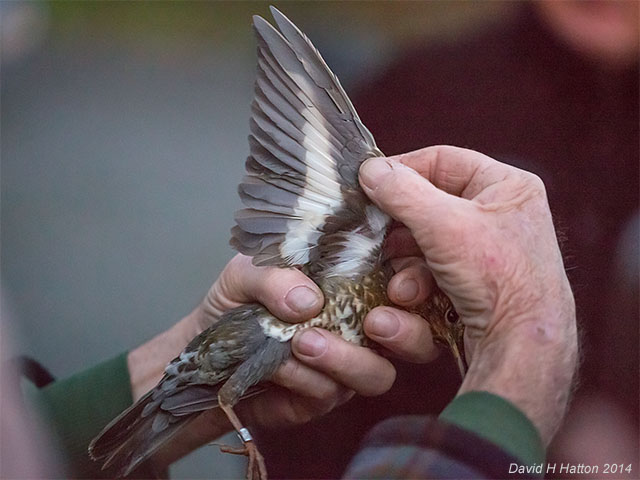
Siberian Thrush, Scousburgh, Mainland, Shetland (Photo: David H Hatton)
Unfortunately the thrush had moved on by the following morning and so was not widely twitched, but last week's most popular bird stuck around until Wednesday 16th: the Steppe Grey Shrike at Burnham Norton (Norfolk). Another rare shrike — an Isabelline — was also found on the Norfolk coast, at Warham Greens on 15th; it lingered there to 17th. It was one of three during the week, the others at Kilnsea (E Yorks) from 15–17th and Worth Marsh (Kent) on 16th.

Steppe Grey Shrike, Burnham Norton, Norfolk (Photo: Mark Rafter)
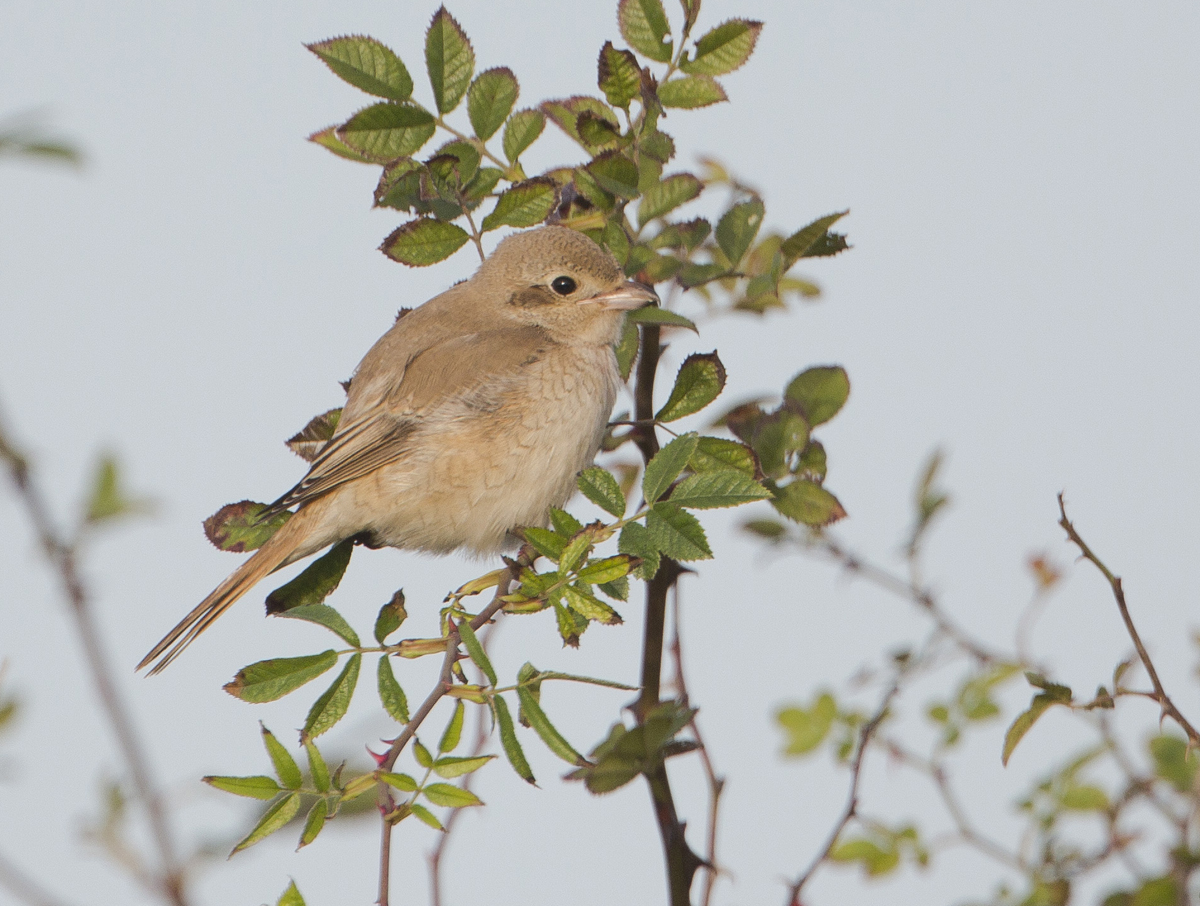
Isabelline Shrike, Warham Greens, Norfolk (Photo: Kevin Du Rose)

Isabelline Shrike, Spurn YWT, East Yorkshire (Photo: Darren Ward)
A drake Black Scoter was a cracking find in Lunan Bay (Angus and Dundee) on 20th; presumably the windy conditions of 21st were the reason for a lack of subsequent reports. Single Surf Scoters remained in Lothian, Co Louth and on Orkney, while three drakes (and a possible female) were at the contemporary hot-spot of Colwyn Bay (Conwy) on 16th. A White-billed Diver off Fetlar (Shetland) on 16th was a fairly typical record.
The long-staying Blue-winged Teal continued to float around on the River Wansbeck near Ashington (Northumberland), and Green-winged Teal, now moulting out of eclipse, were identified at Stiffkey (Norfolk) on 16th, Loch Leven (Perth and Kinross) on 18th and on Tresco (Scilly) from 20th, in addition to the Caerlaverock bird. A familiar line-up of American Wigeon included returning drakes at Tullaghan (Leitrim) and Udale Bay (Highland) in addition to birds on North Ronaldsay (Orkney) on 15th and Loch Leven on 18th. Ring-necked Ducks remained at Drift Reservoir (Cornwall) and Rutland Water; a fascinating report of a drake Lesser Scaup bearing a red nasal saddle was received from Llangorse Lake (Powys) on 18th and the usual drake remained in Cardiff Bay (Glamorgan), as did the juvenile on Tiree (Argyll).

Ring-necked Duck, Drift Reservoir, Cornwall (Photo: Andrew Grinter)
Geese are returning and, among the Barnacles, Richardson's Cackling Geese were found on Barra (Outer Hebrides) on 15th and Islay (Argyll) on 21st; the latter also hosting a roving Todd's Canada Goose. Black Brants popped up at a series of utterly predictable locations: The Naze (Essex), Kilnsea (E Yorks), Ferrybridge (Dorset) and Swalecliffe (Kent).
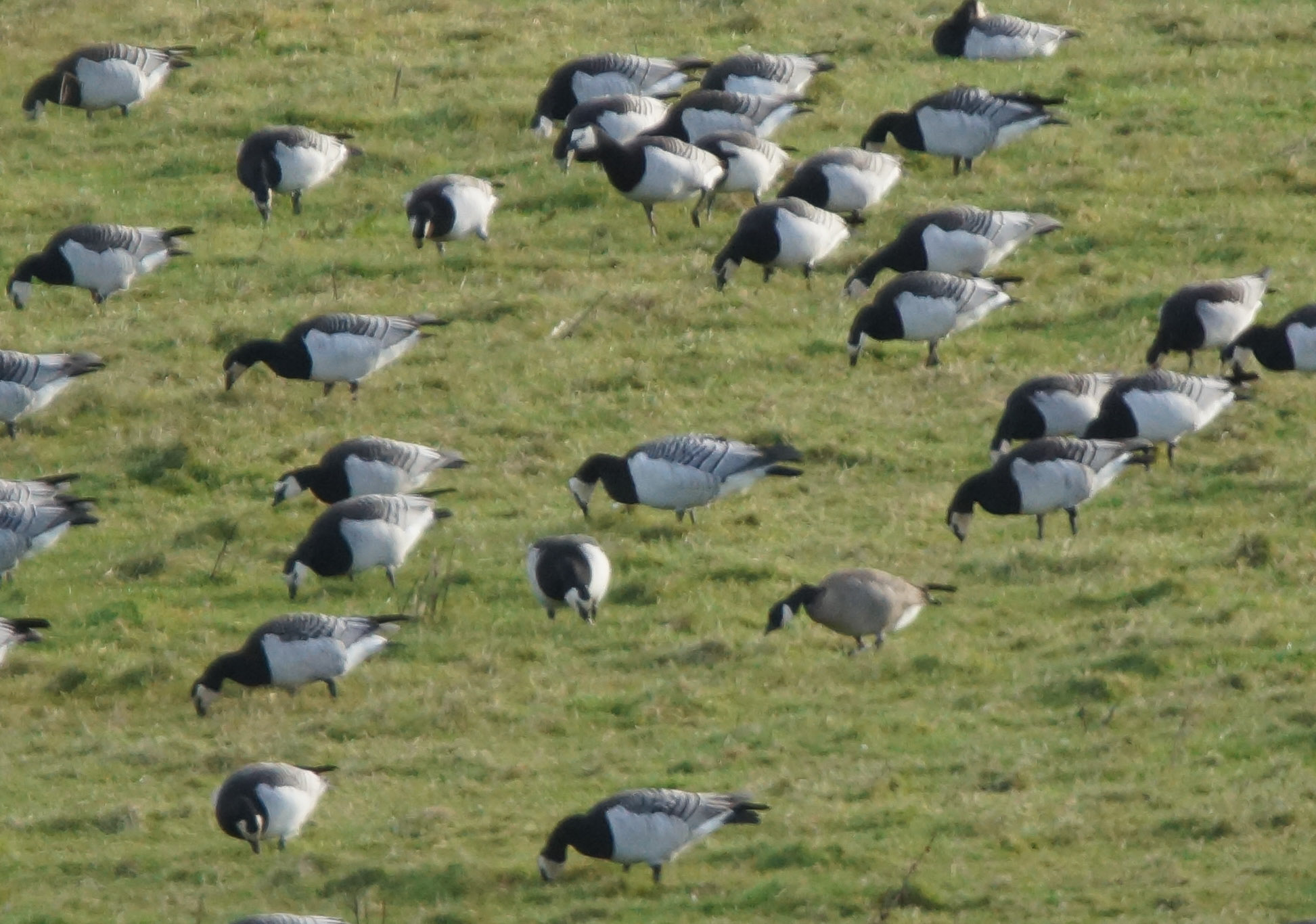
Richardson's Cackling Goose, Loch Gruinart RSPB, Islay, Argyll (Photo: Stephen Percival)
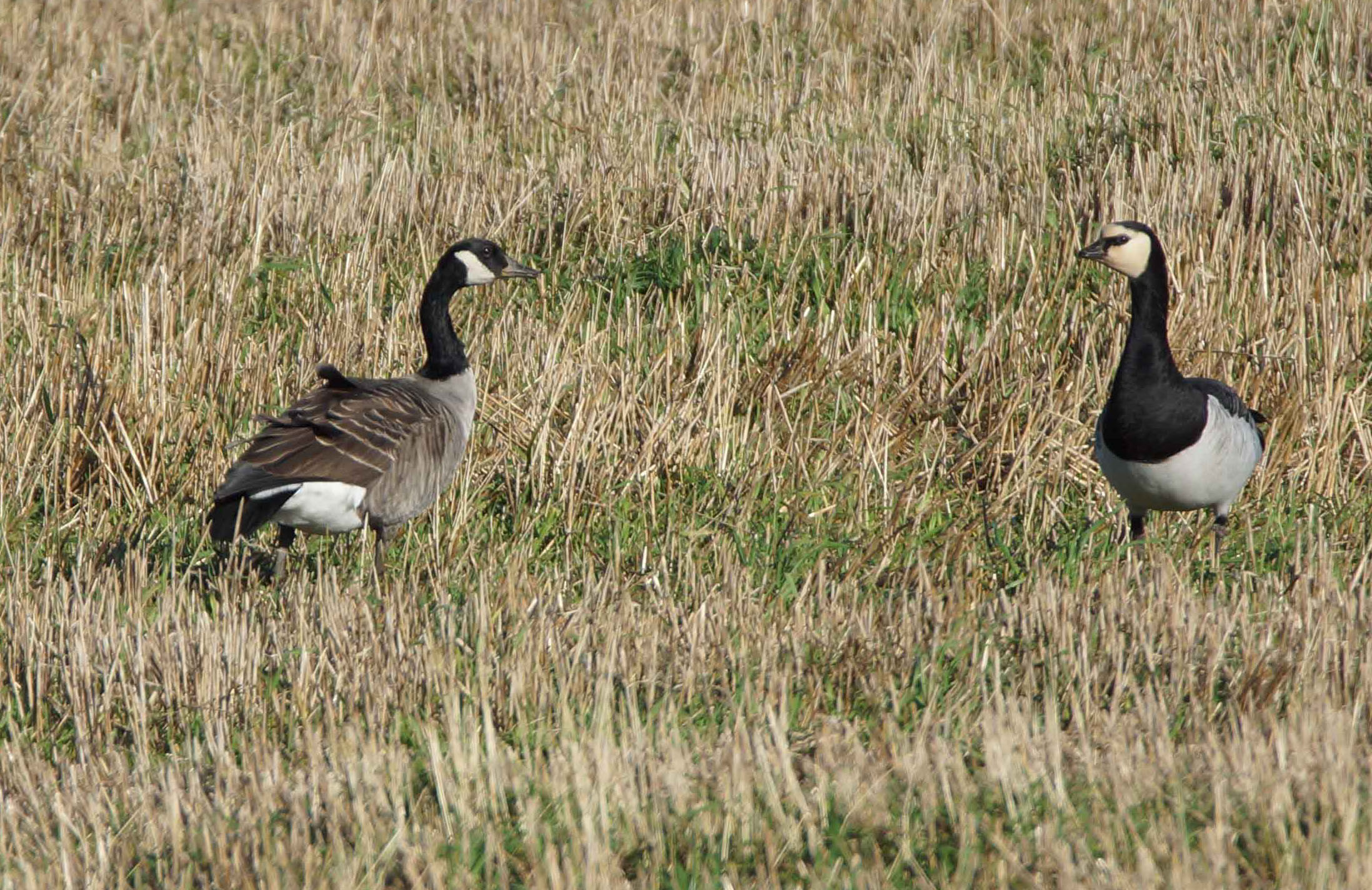
Todd's Canada Goose, Loch Gorm, Islay, Argyll (Photo: Stephen Percival)
Amid the hordes of Great Whites, Cattle Egrets were seen at Dungeness (Kent), Braunton Marsh (Devon), Burton Mere (Cheshire) and Westray (Orkney), the latter picked up exhausted on 20th. Glossy Ibis records included birds in Counties Donegal, Louth and Wexford, as well as Nottinghamshire, Lincolnshire, Cambridgeshire and Kent.
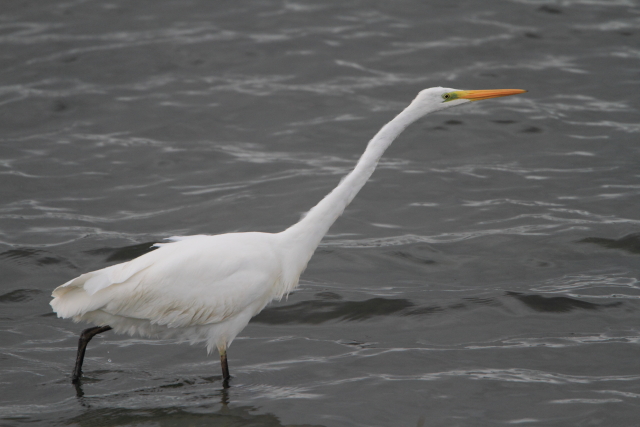
Great White Egret, Brand's Bay, Dorset (Photo: Simon Kidner)
It's been a lean few winters for Rough-legged Buzzards, so this week's influx was most welcome. Given that many birds seemed to be actively migrating (or at least mobile), it's difficult to put an exact number on the birds involved, but there's no denying that they were widespread — 79 reports on Bird News Extra this week primarily concerned birds along the English east coast between Essex and Durham, although there were one or two reports inland. Most were alone, although reports of two came from Spurn (E Yorks), Gibraltar Point (Lincs) and both Kelling and Breydon Water (Norfolk). The Snowy Owl was still on Ben Macdui on 17th, with another male on private land at Camster on 15th and 18th.

Rough-legged Buzzard, Washington, Durham (Photo: Mark Newsome)
Inclement weather at this time of year routinely brings an influx of Grey Phalaropes to our shores, and in addition to the aforementioned seawatching counts, a good scattering of birds was seen nationwide. A flock of around 30 were on the sea off Bryher (Scilly) on 19th, but it is generally the unfortunate storm-blown stragglers at inland localities that draw the crowds — this week including birds at Pitsford Reservoir (Northants), Idle Valley (Notts) and Grafham Water (Cambs), among others. An impressive 12 off Gibraltar Point (Lincs) on 19th was a good North Sea total. Leach's Storm-petrels also occasionally figure, though the only bird reported was quickly gobbled up by a ravenous Herring Gull at Grafham Water on 21st.

Grey Phalarope, Pitsford Reservoir, Northamptonshire (Photo: John Friendship-Taylor)
A Kentish Plover at Crymlyn Burrows (Glamorgan) from 18th–20th was a surprising record to say the least, given the prevailing weather and date. Altogether more expected were a handful of American Golden Plovers, including a confiding juvenile performing well at Davidstow Airfield (Cornwall) throughout the week and others found at Myroe Levels (L'derry) on 16th, Maidens (Ayrshire) on 17th and Aillebrack (Galway) on 21st, in addition to the long-stayer still on Tiree.

Kentish Plover, Crymlyn Burrows, Glamorgan (Photo: Mark Hipkin)
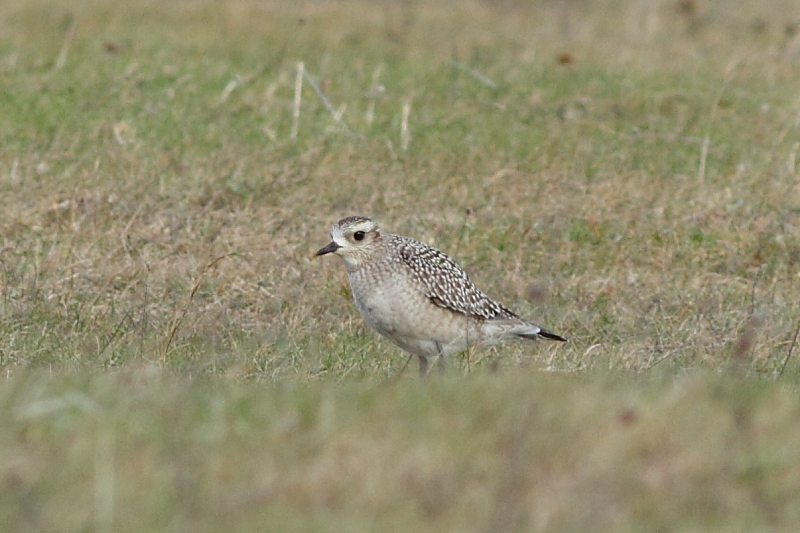
American Golden Plover, Aillebrack, Galway (Photo: Dermot Breen)

American Golden Plover, Davidstow Airfield, Cornwall (Photo: Chris Upson)
Juvenile Spotted Sandpipers are always notable on the east coast and one at Iverallochy (Aberdeenshire) on 19th–20th was a great find. The Lesser Yellowlegs was still at Rogerstown Estuary (Dublin) throughout the week and Gonzalo delivered another to Hayle Estuary (Cornwall) on 21st. White-rumped Sandpipers remained strangely scarce, with just a single lingering bird on South Uist reported; nine Pectoral Sandpipers included new birds in Counties Cork and Wexford, as well as Suffolk, Gloucestershire and Gwent.
An adult Franklin's Gull was all too brief at Blashford Lakes (Hants) on 19th, while the week's only Ring-billed Gull was the usual adult loafing around Portrush (Antrim). The Forster's Tern reappeared on Rogerstown Estuary (Dublin) from 15th, and a slightly unusual mid-October record concerned an adult White-winged Black Tern, still sporting much of its summer dress, at Rye Harbour (E Sussex) from 18th.

Ring-billed Gull, Portrush, Antrim (Photo: Christine Cassidy)
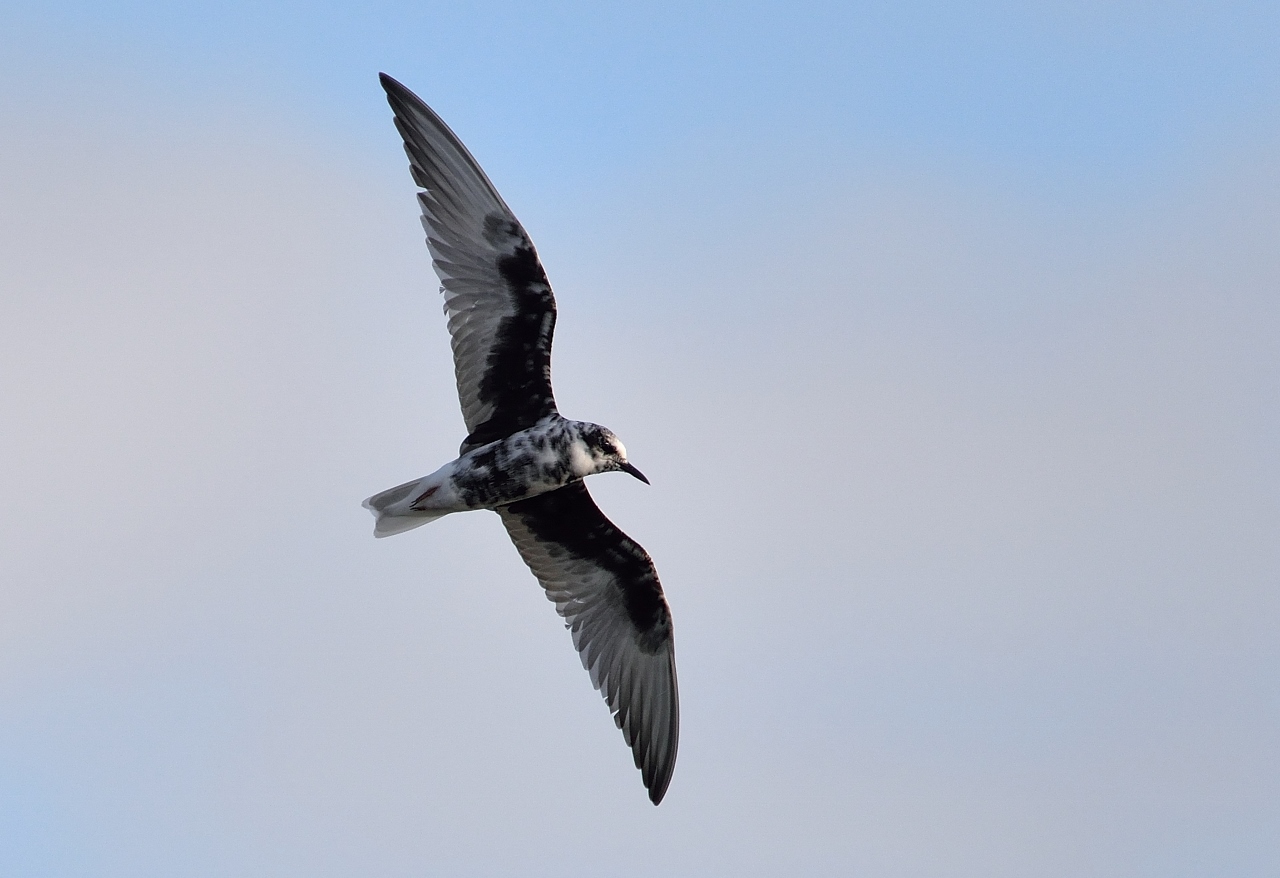
White-winged Black Tern, Rye Harbour NR, East Sussex (Photo: Bob Eade)
A pulse of late Wrynecks saw seven recorded, all in the South-West, apart from a presumably quite chilly bird at Voxter (Shetland) on Sunday 19th. The Hoopoe remained at Spurn (E Yorks) to 16th and another was reported "near Dumfries" on 20th.
The second half of October is the time for Pallid Swifts in Britain, and this week saw two records, both from East Yorkshire: at Kilnsea on 16th and in off the sea at Flamborough Head on 20th. Less expected was an Alpine Swift zooming over Dinton Pastures (Berks) on 15th.
Short-toed Larks included up to three on St Mary's (Scilly) on 19th, with birds also at Sumburgh (Shetland) on 15th and Thornwick Bay (E Yorks) on 16th, plus the St Agnes (Scilly) bird to 18th. Perhaps 10 Richard's Pipits was a relatively unspectacular total for mid-October, while a Red-throated Pipit was found at Norby (Shetland) on 16th, in addition to the continuing Fair Isle bird; the latter shared the island with up to three Olive-backed Pipits on 18th. At least seven OBPs were recorded, though the stand-out bird was a deliciously tame individual at Roker, Sunderland (Durham), from 17th that posed beautifully for the cameras. Others were at Gibraltar Point (Lincs) on 15th, on the Farne Islands (Northumberland) from 15th–18th and still in Wells Woods (Norfolk) to 16th.
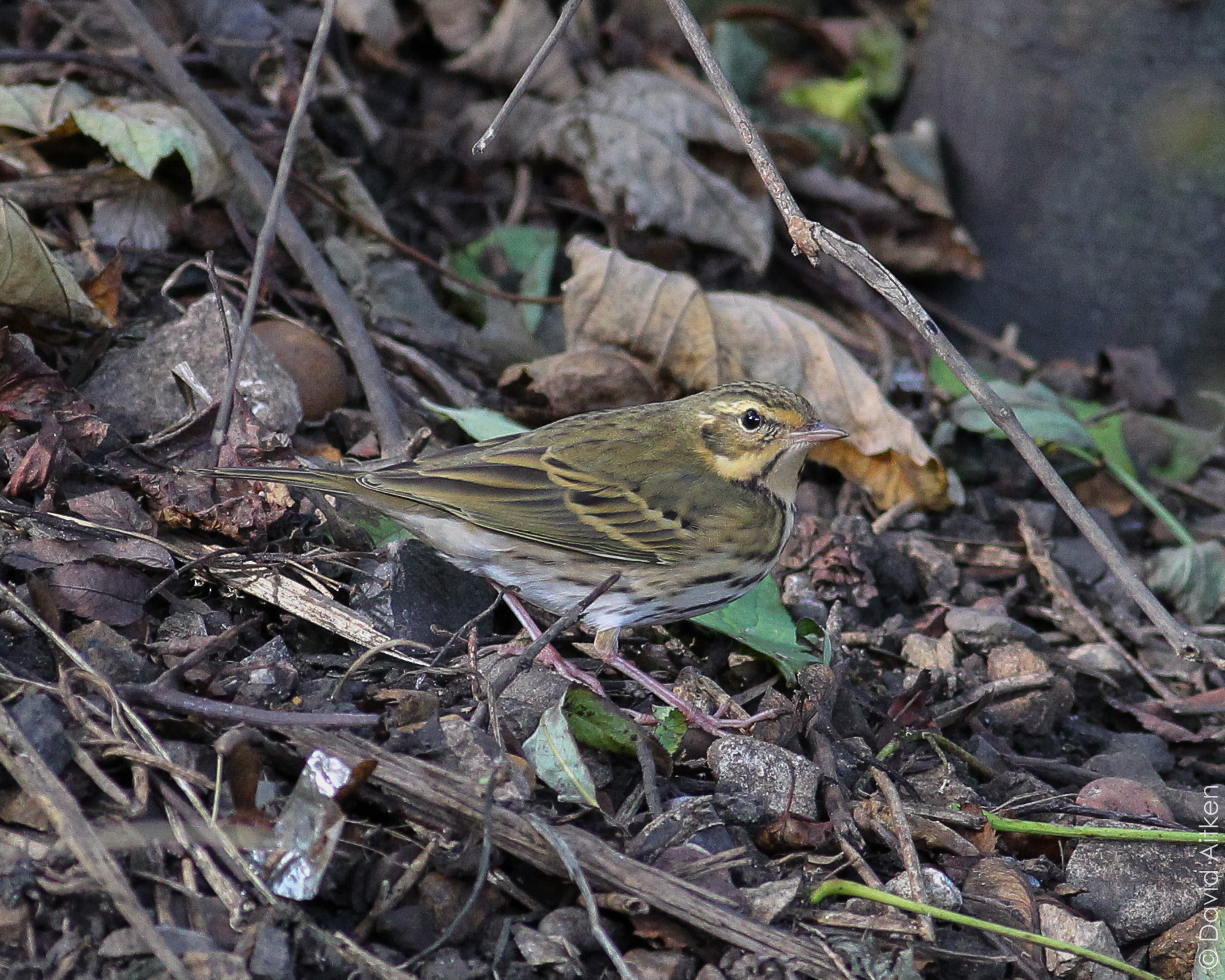
Olive-backed Pipit, Sunderland, Durham (Photo: David Aitken)

Olive-backed Pipit, Sunderland, Durham (Photo: Frank Golding)
The Torness Power Station Siberian Stonechat lingered until 17th, and it or another was at nearby Skateraw on that date; a good south coast find was a first-winter at Titchfield Haven (Hants) on 18th and still there to the week's end. Last week's Red-flanked Bluetail also continued on Fair Isle to 16th, while Bluethroats included at least three on Shetland and another at Torness Power Station on 15th.
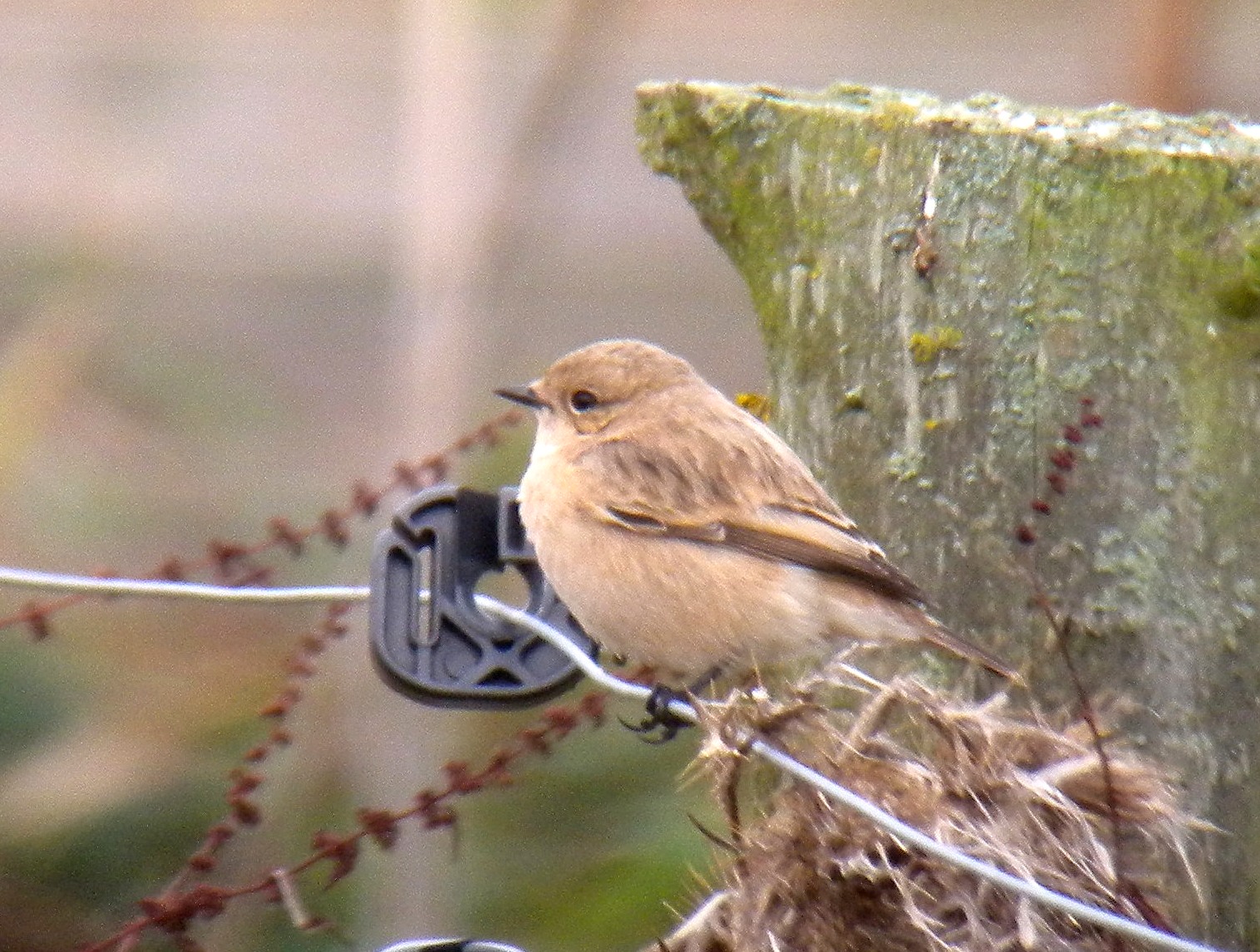
Siberian Stonechat, Titchfield Haven NNR, Hampshire (Photo: Doug Kelson)
The on-form Torness also continued to host the now long-staying adult Booted Warbler throughout the week, though the possible Moltoni's Warbler at Porthgwarra — still not yet heard to call — was last seen on 17th. After last week's arrival, just a single new Radde's Warbler was discovered: at Easington (E Yorks) on 15th, with the Wells Woods bird still there that day. Across the channel at Wells, East Hills claimed a Dusky Warbler on 15th and another was at Reculver (Kent). A number of candidate Siberian Lesser Whitethroats were also seen along the coast.
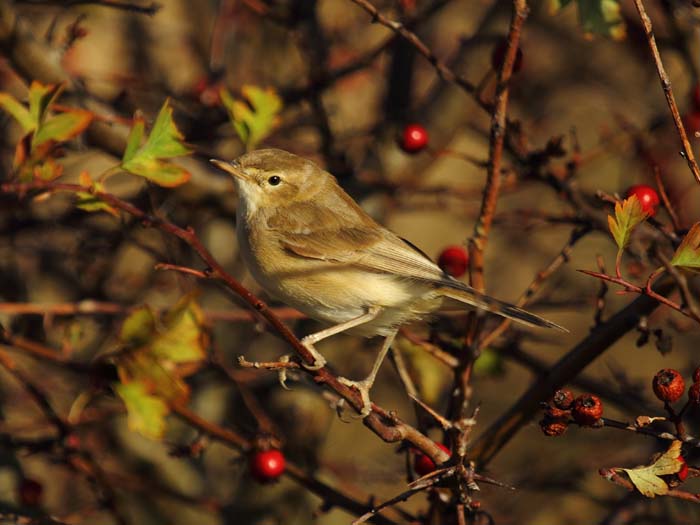
Booted Warbler, Torness Power Station, Lothian (Photo: Dave Grant)
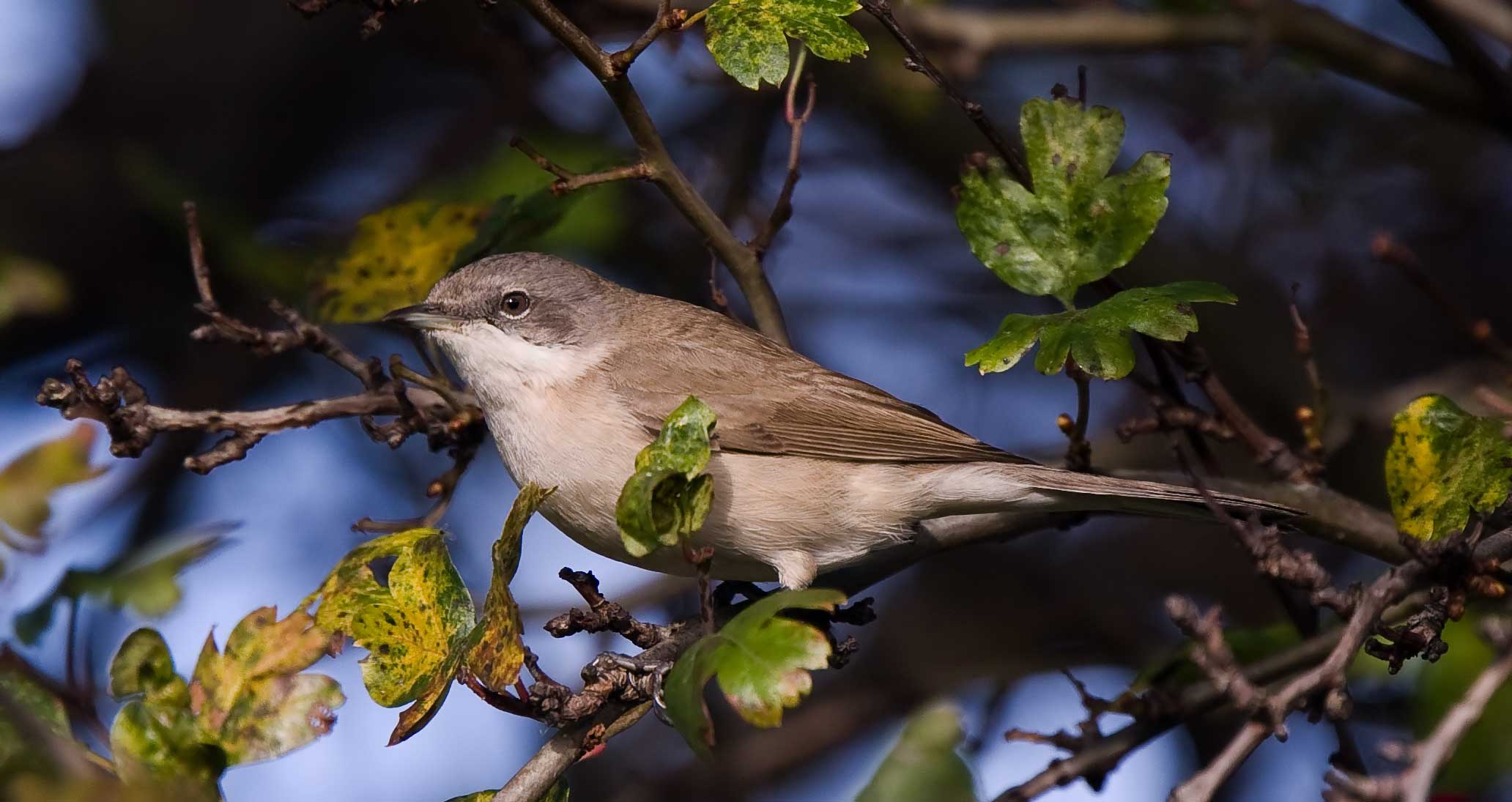
Siberian Lesser Whitethroat, Sunderland, Durham (Photo: Chris Downes)
A Hume's Leaf Warbler was at Voe (Shetland) on 19th–20th and Yellow-browed Warbler numbers remained strong. Norfolk dominated Pallas's Warbler sightings, with at least 11 reported including twos at Holme Dunes and East Hills, Wells. Other reports came from Co Durham, East Yorkshire, Lincolnshire and Cornwall.
Scarce migrants included a scattering of Rose-coloured Starlings, Red-breasted Flycatchers and Barred Warblers, but the only Common Rosefinch of the week was on Tresco (Scilly) on 21st and Red-backed Shrikes were limited to lingering birds at Ness Point (Suffolk) all week and West Runton (Norfolk) to 17th. Little Buntings comprised two on Fair Isle on 18th and others at Flamborough Head (E Yorks) and St Agnes (Scilly) on 15th.
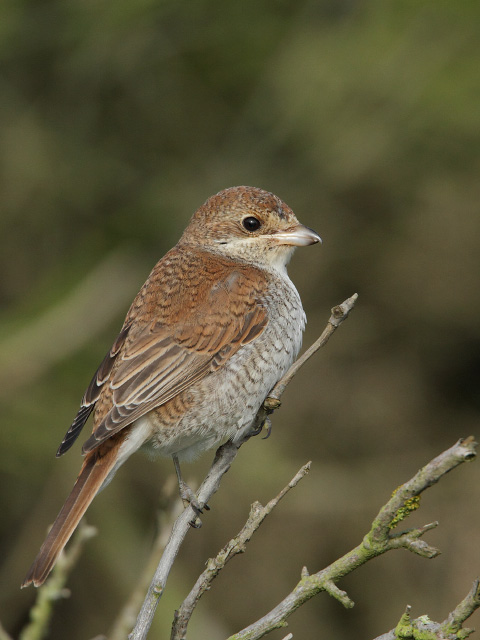
Red-backed Shrike, Ness Point, Lowestoft, Suffolk (Photo: Chris Mayne)
A Penduline Tit at Titchwell (Norfolk) on 18th–19th followed another report of the recent Strumpshaw bird on 17th. Other bits and bobs included Shore Larks in Kent, Suffolk, Norfolk and East Yorkshire. Great Grey Shrikes also seem to be arriving, with the highest count being at least six between Spurn and Easington on 15th; others were already back at traditional wintering sites such as Thursley Common (Surrey) and Cannock Chase (Staffs).

Great Grey Shrike, Flamborough Head, East Yorkshire (Photo: Lee Johnson)

Great Grey Shrike, Landguard NR, Suffolk (Photo: Jonathan Theobald)
Photo of the Week
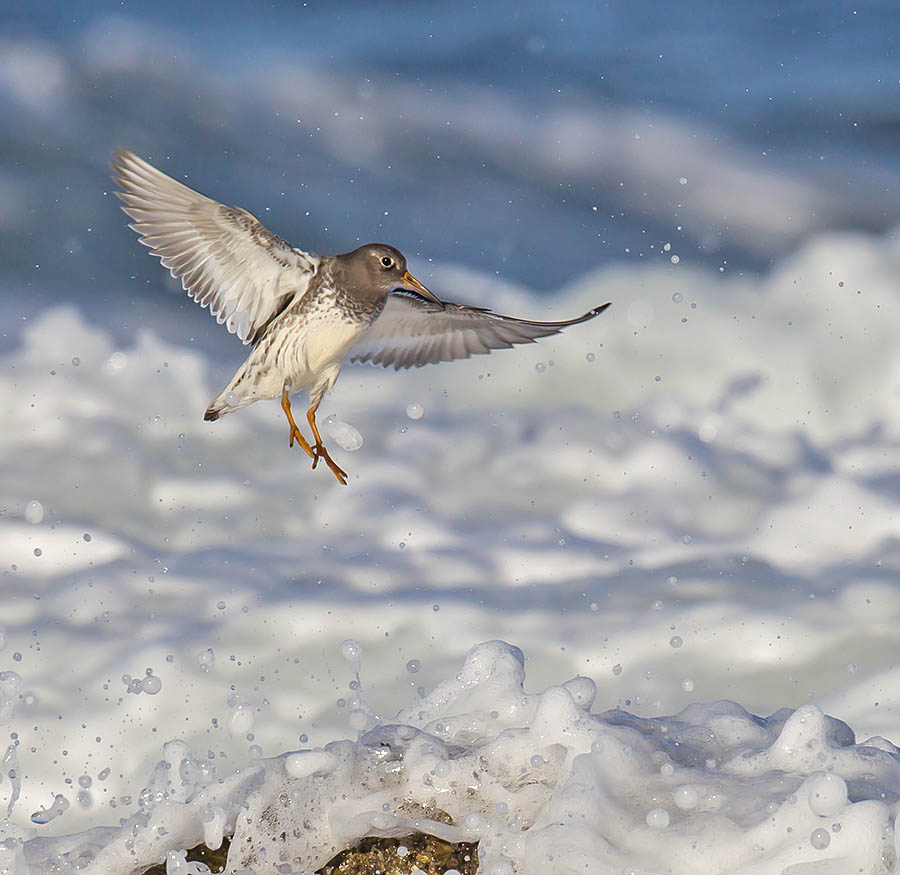
Purple Sandpiper, Fife Ness, Fife (Photo: John Anderson)
Purple Sandpiper is one of those species that is relatively easy to photograph once you have found one, writes Steve Young. The species can be approachable, as well as being photogenic perched on rocks along the shore.
Portraits are always nice, but this image by John Anderson has that something extra that wins this week’s Photo the Week accolade. It looks like John was photographing the bird on a rock, waiting for the oncoming wave to push the bird off. The resulting shot as the sandpiper has leapt into the air is stunning. Shooting at 1/2,000th second has frozen both the bird and the wave and the beautiful lighting only adds to this superb image.
Congratulations John on your winning shot!
Other notable images

Goldcrest, Holy Island, Northumberland (Photo: Andy Mould)

Golden Eagle, Sweden (Photo: Ron Mccombe)
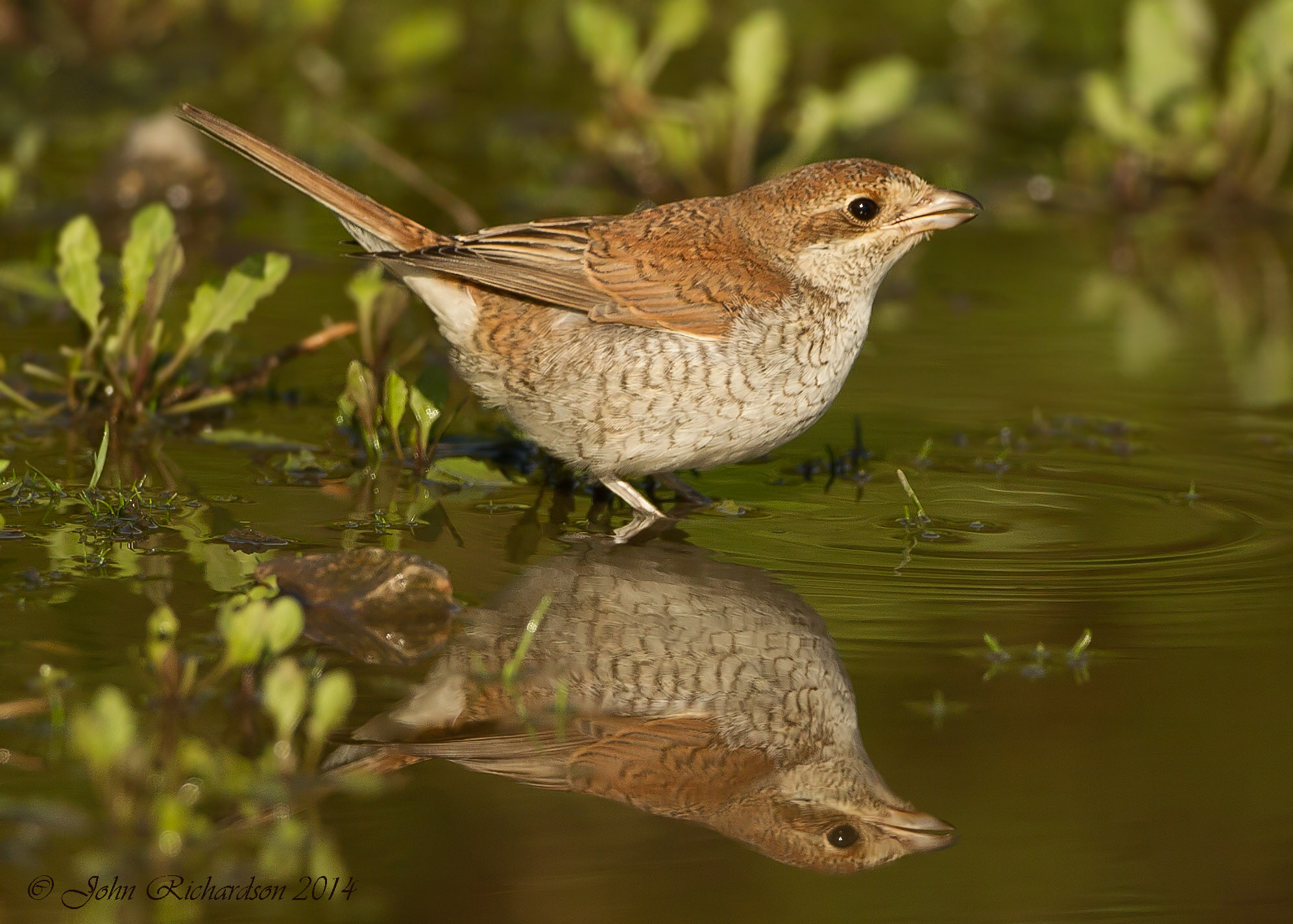
Red-backed Shrike, Lowestoft, Suffolk (Photo: John Richardson)

Cattle Egret, Dungeness RSPB, Kent (Photo: Brian Anderson)

Kingfisher, private site, Devon (Photo: Rob Cross)

Grey Heron, National Wetlands Centre, Carmarthen (Photo: Wayne Davies)

Green Woodpecker, Chippenham, Wiltshire (Photo: Pete Blanchard)

Fulmar, Sumburgh, Mainland, Shetland (Photo: David H Hatton)

Arctic Skua, Barna, Galway (Photo: Dermot Breen)

White-tailed Eagle, Mull, Argyll (Photo: Dave Soons)


